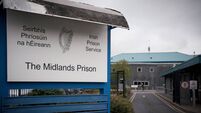Quota freedom reigns in ‘Indian country’
The state is in desperate need of farmers to take on 65,000 cows to supply milk to a developing dairy industry.
A team from South Dakota visited Ireland last August outlining the attractions of heading west to the ancient stronghold of the Sioux Indians, and the land where Calamity Jane, Sitting Bull, and Wild Bill Hickok roamed.













